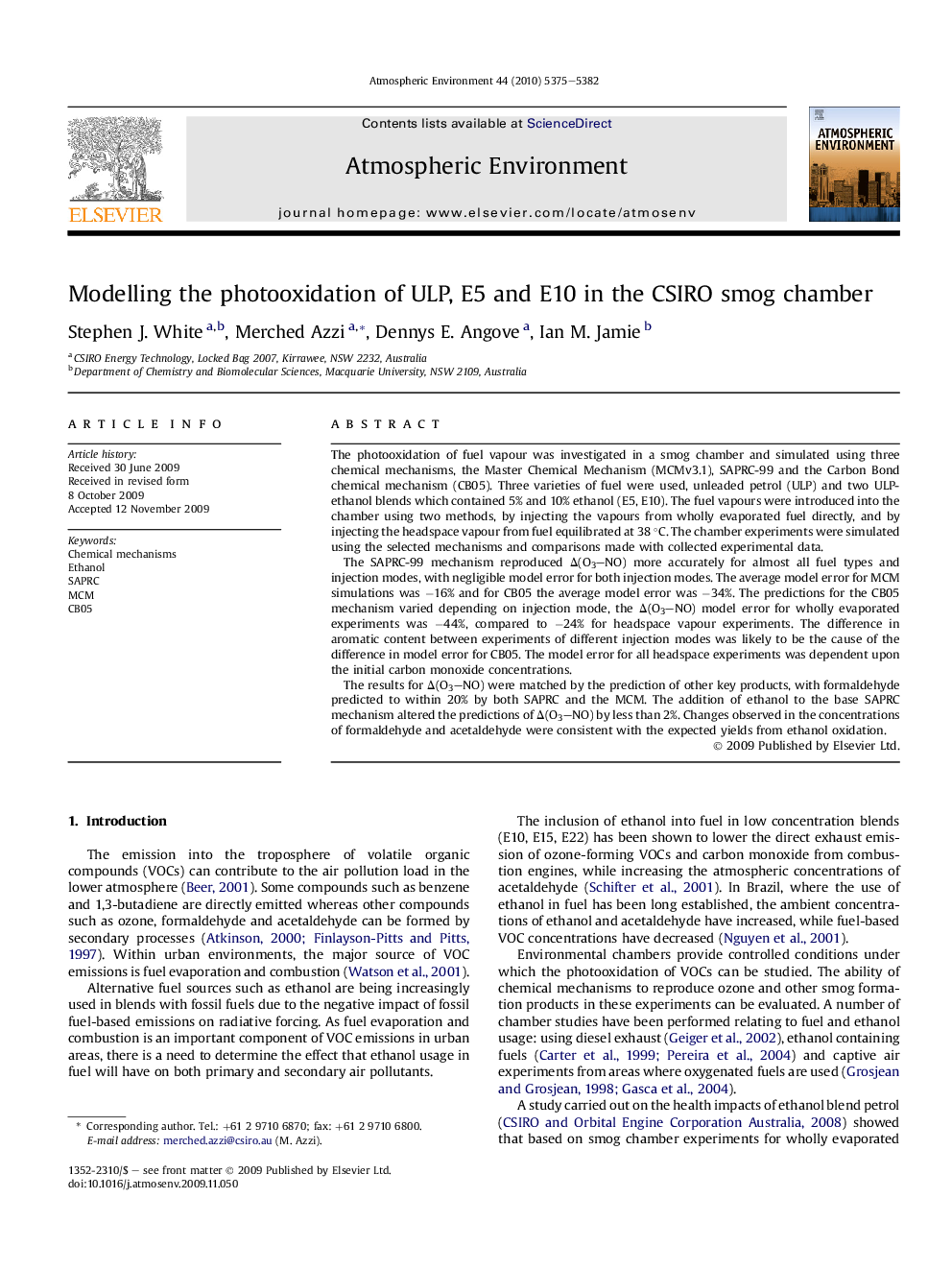| Article ID | Journal | Published Year | Pages | File Type |
|---|---|---|---|---|
| 4440317 | Atmospheric Environment | 2010 | 8 Pages |
The photooxidation of fuel vapour was investigated in a smog chamber and simulated using three chemical mechanisms, the Master Chemical Mechanism (MCMv3.1), SAPRC-99 and the Carbon Bond chemical mechanism (CB05). Three varieties of fuel were used, unleaded petrol (ULP) and two ULP-ethanol blends which contained 5% and 10% ethanol (E5, E10). The fuel vapours were introduced into the chamber using two methods, by injecting the vapours from wholly evaporated fuel directly, and by injecting the headspace vapour from fuel equilibrated at 38 °C. The chamber experiments were simulated using the selected mechanisms and comparisons made with collected experimental data.The SAPRC-99 mechanism reproduced Δ(O3–NO) more accurately for almost all fuel types and injection modes, with negligible model error for both injection modes. The average model error for MCM simulations was −16% and for CB05 the average model error was −34%. The predictions for the CB05 mechanism varied depending on injection mode, the Δ(O3–NO) model error for wholly evaporated experiments was −44%, compared to −24% for headspace vapour experiments. The difference in aromatic content between experiments of different injection modes was likely to be the cause of the difference in model error for CB05. The model error for all headspace experiments was dependent upon the initial carbon monoxide concentrations.The results for Δ(O3–NO) were matched by the prediction of other key products, with formaldehyde predicted to within 20% by both SAPRC and the MCM. The addition of ethanol to the base SAPRC mechanism altered the predictions of Δ(O3–NO) by less than 2%. Changes observed in the concentrations of formaldehyde and acetaldehyde were consistent with the expected yields from ethanol oxidation.
